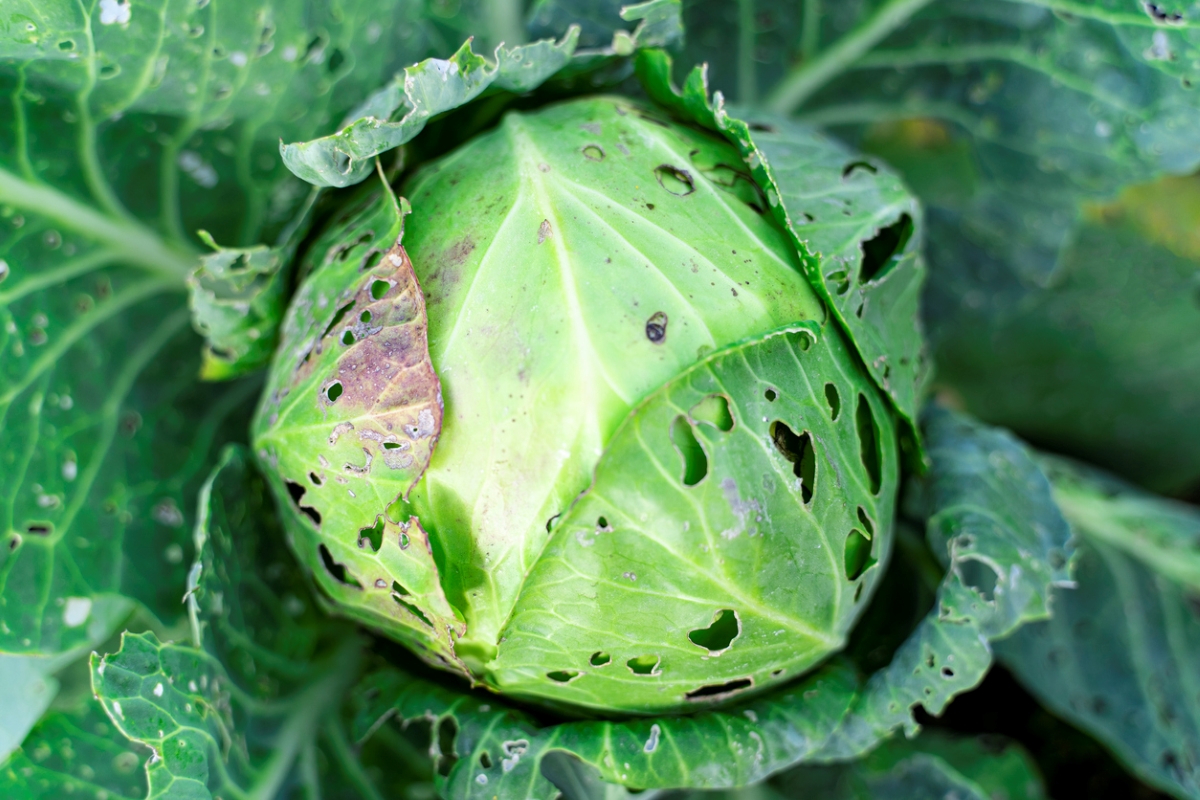We may earn revenue from the products available on this page and participate in affiliate programs. Learn More ›
Cabbage worms can pose a real threat to cruciferous vegetables in the garden. These velvety green caterpillars nibble at leaves and vegetables and can even contaminate crops with their fecal matter. If left untreated, they can nearly decimate the cabbage, broccoli, cauliflower, and other cruciferous crops in a garden, leaving behind only veins and stems.
Knowing how to get rid of cabbage worms is essential in preventing this garden pest from wreaking havoc and wiping out plants.
RELATED: Garden Wreckers: 13 Pests That Will Tear Your Plants Apart This Spring
What Are Cabbage Worms?
Cabbage worms, also known as imported cabbage worms, are a type of caterpillar. These pests feed on plants from the Brassicaceae family, which includes cruciferous vegetables like broccoli, Brussels sprouts, cabbage, collard greens, kale, rutabaga, and turnips.
Once cabbage worm larvae undergo metamorphosis, the butterflies are referred to as small whites, cabbage whites, or cabbage moths. Female adult butterflies lay their eggs on the underside of leaves. Since baby caterpillars quickly emerge to feed on the leaves of these plants, adult cabbage moths also pose a threat to the health of cruciferous plants in the garden.
Identifying Cabbage Worms
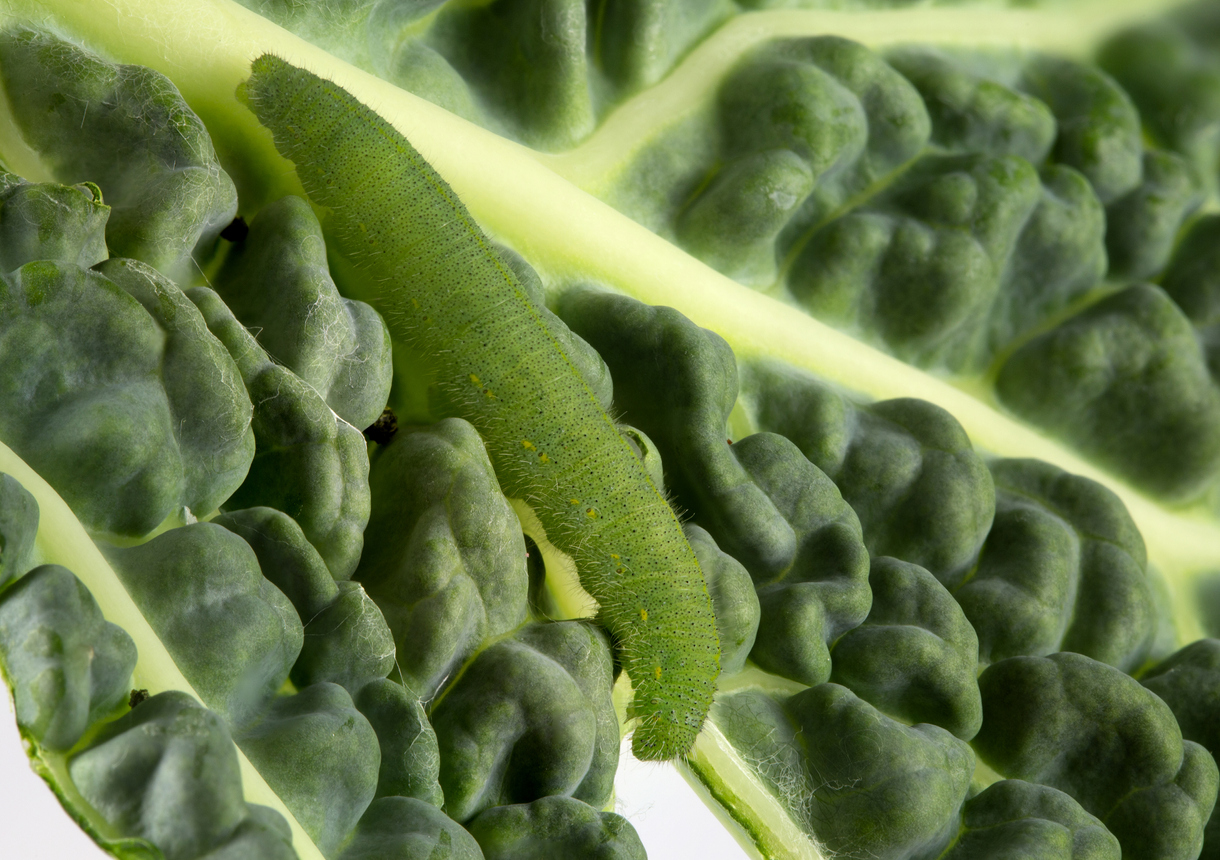
Cabbage worms are light-green with a faint yellow stripe running down their back and additional yellow stripes crossing their body. They have velvety soft hairs. Once cabbage worms first hatch from their eggs, they are very tiny, while full-grown cabbage worms will be about 1 inch long.
Life Stages
There are four stages in the cabbage worm life cycle: egg, larva, pupa, adult. Depending on the weather, it can take between 3 and 6 weeks for the cabbage worm to go through all four stages of the life cycle.
- Egg: Adult cabbage white butterflies lay their eggs on the underside of leaves of plants in the Brassicaceae family. Cabbage worm eggs are very small—just ½ to 1 millimeter (mm) long. The eggs are pale white immediately after being laid but will change to a yellowish color before the larvae hatch.
- Larva: The larval stage lasts for about 15 days. During this time, the caterpillars go through five instar stages as they molt their exoskeleton and grow. The caterpillars that emerge from the eggs are only about 3 mm long, or a little under ⅛ inch. By the end of the fifth instar, they will be about 25 mm, or 1 inch, long. During all but the first instar stage, the larvae will have a characteristic yellow line running down the center of their backs, though it may not be a solid line in the earlier instars.
- Pupa: Cabbage worms normally form their pupae, or chrysalises, on plants. While the chrysalides may vary in color, they are typically green, yellow, gray, or speckled brown. This stage in the life cycle lasts for about 11 days, though it can be significantly longer if in the overwintering stage.
- Adult: Adult butterflies have pale-yellow wings with very faint black spots. Their wingspan is between 4½ and 6½ centimeters (about 1¾ to 2½ inches). The females’ bodies are covered in white hair, and the males’ bodies are covered with a darker color. Female butterflies can produce as many as 300 to 400 eggs during their 3-week lifespan.
Plant Damage
Cabbage worms can cause significant damage to garden plants. As mentioned above, these pests feed on cabbage, broccoli, kale, collard greens, cauliflower, Brussels sprouts, and other Brassicaceae family members. The first evidence of cabbage worms in the garden will likely be the appearance of uniform holes between the veins in the leaves of these plants.
If a garden is facing a large cabbage worm infestation, the plant damage can be more severe. The worms may eat all of a plants’ leaves, leaving behind just the veins and stems. Beyond leaf damage, cabbage worm feces can contaminate a plant’s vegetable growth.
How to Get Rid of Cabbage Worms
When comparing cabbage worm control methods, it’s highly recommended to avoid chemical pesticides, which pose a threat to children, pets, a garden’s beneficial insects, and your local environment. However, those who choose to use a chemical pesticide on cabbage worms should carefully follow the safety tips outlined by the Environmental Protection Agency.
Fortunately, there are several natural methods that effectively get rid of worms on plants, none of which require the use of dangerous pesticides.
Working Time: 1 to 2 hours
Total Time: 1 to 4 weeks
Skill Level: Beginner
Estimated Cost: $25 to $150
Tools & Materials
Bobvila.com may earn a commission from purchases made through these links.
STEP 1: Hand-pick as many cabbage worms and eggs from your plants as possible.
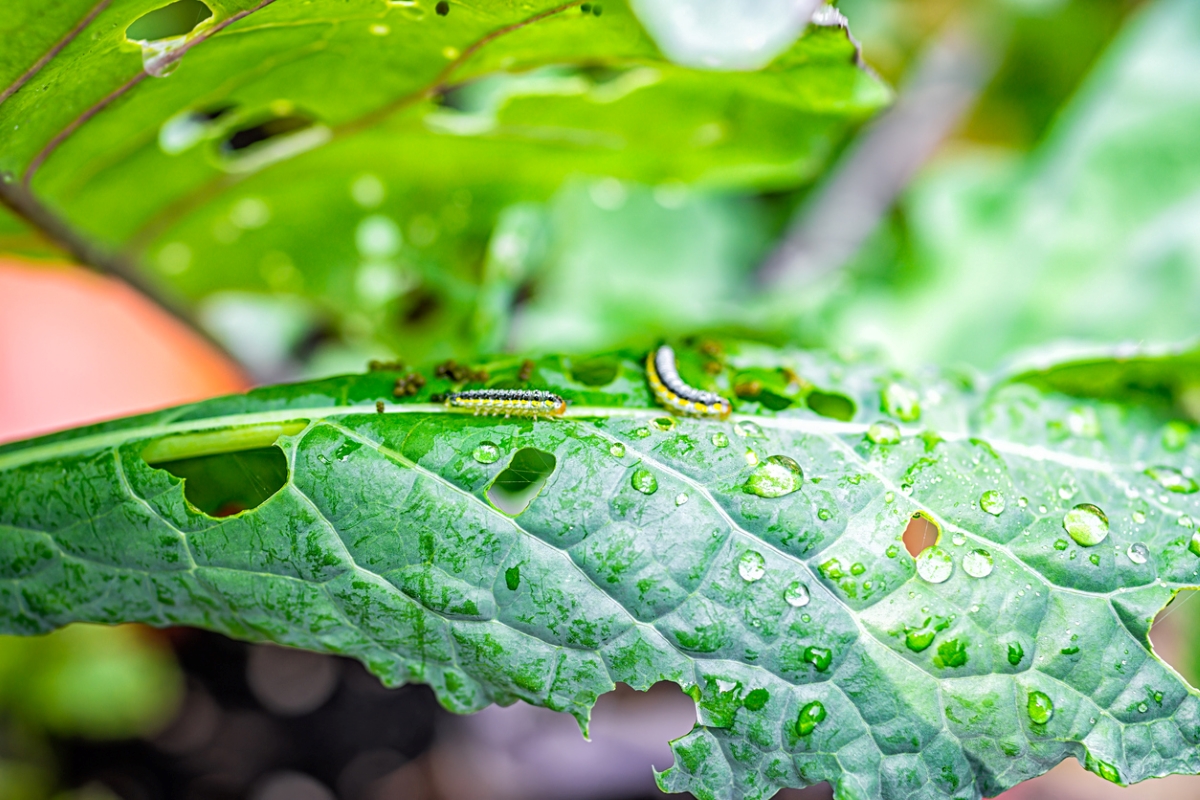
When it comes to how to get rid of caterpillars on plants naturally, the first thing you’ll want to do is to manually remove any cabbage worms or eggs yourself. Before picking the cabbage worms or eggs off of the leaves, fill a bucket with a caterpillar treatment solution. Try either hot water with a few drops of dish soap or a vinegar and water solution.
Next, put on a pair of gardening gloves to protect your hands. Pick off all the eggs and green garden worms you can find, and drop them in the bucket. Take care to check under all of the leaves, as this is where the eggs are most likely to be.
STEP 2: Spray the plant leaves with Bacillus thuringiensis.
Bacillus thuringiensis (Bt) is a naturally-occurring soil bacteria that can kill the cabbage white caterpillar and other caterpillar species in just a few days. When caterpillars ingest this natural insecticide, it paralyzes their digestive system. They will immediately stop eating, and will die within a few days.
Bt comes in both liquid and powdered forms. To use it to take care of a cabbage worm problem, spray or sprinkle the Bt on the leaves of the plants where green cabbage worms are present or where visible damage appears.
While Bt is poisonous for caterpillars, along with a few worms and moths, it is safe for humans, pets, beneficial insects, and plants.
STEP 3: Spray neem oil on and around the plants in the garden.
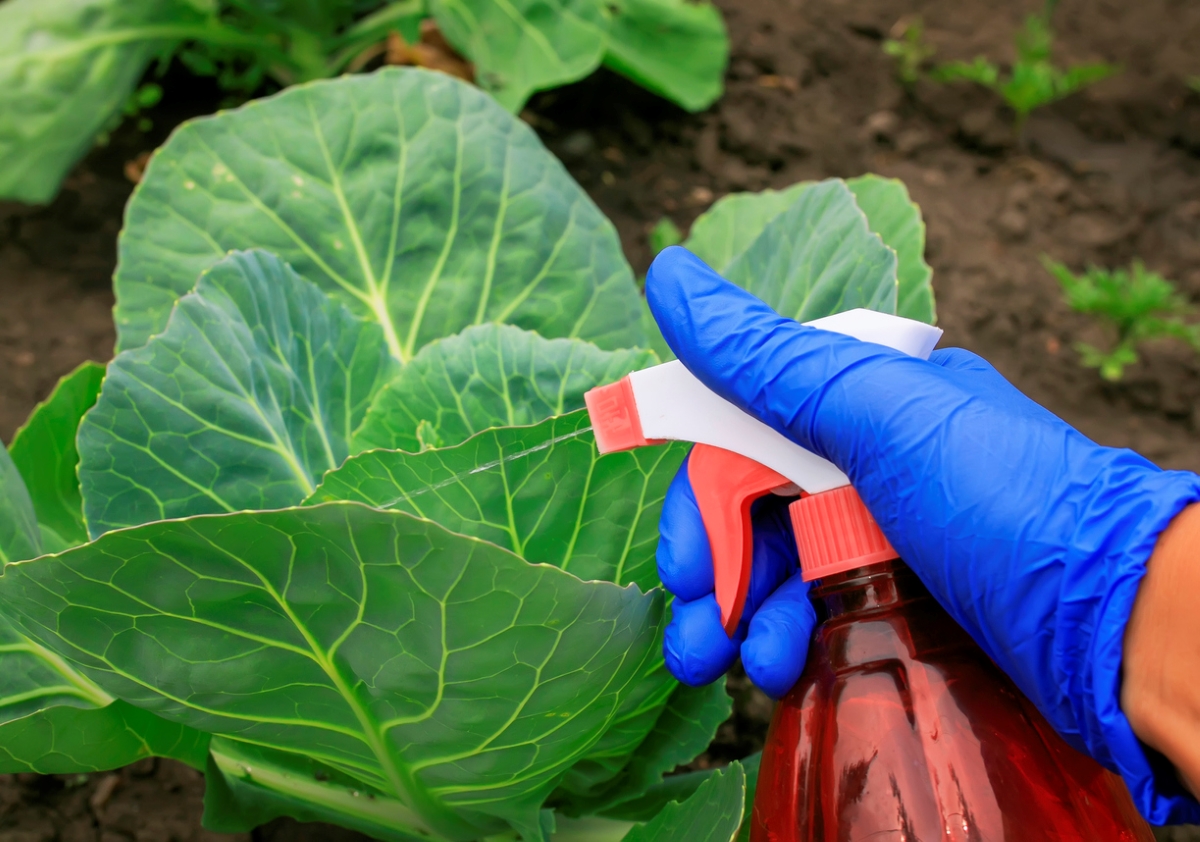
If you’re looking for natural pest control strategies to keep the leaf eating worms away, consider trying neem oil. This natural caterpillar repellent, which comes from the Azadirachta indica tree found in India and South Asia, makes your plants seem less appealing to cabbage worms. While it can kill some insects on contact, it doesn’t have this effect on cabbage worms, so it is best used to deter cabbage worms from visiting your garden. Spray the neem oil over the leaves and around the bases of the plants in the garden.
STEP 4: Use row covers to block access to your plants.
Another solution for how to keep caterpillars off plants is to use floating row covers. As soon as you plant cabbage, broccoli, kale, cauliflower, or other brassica family plants, place the floating row covers over the crops. The row covers can safely stay over these vegetables—and any other plants that do not need to be pollinated—for as long as they are growing. Enough sunlight and water will still be able to reach the plants through these lightweight and breathable covers.
STEP 5: Welcome natural cabbage worm predators to your garden.
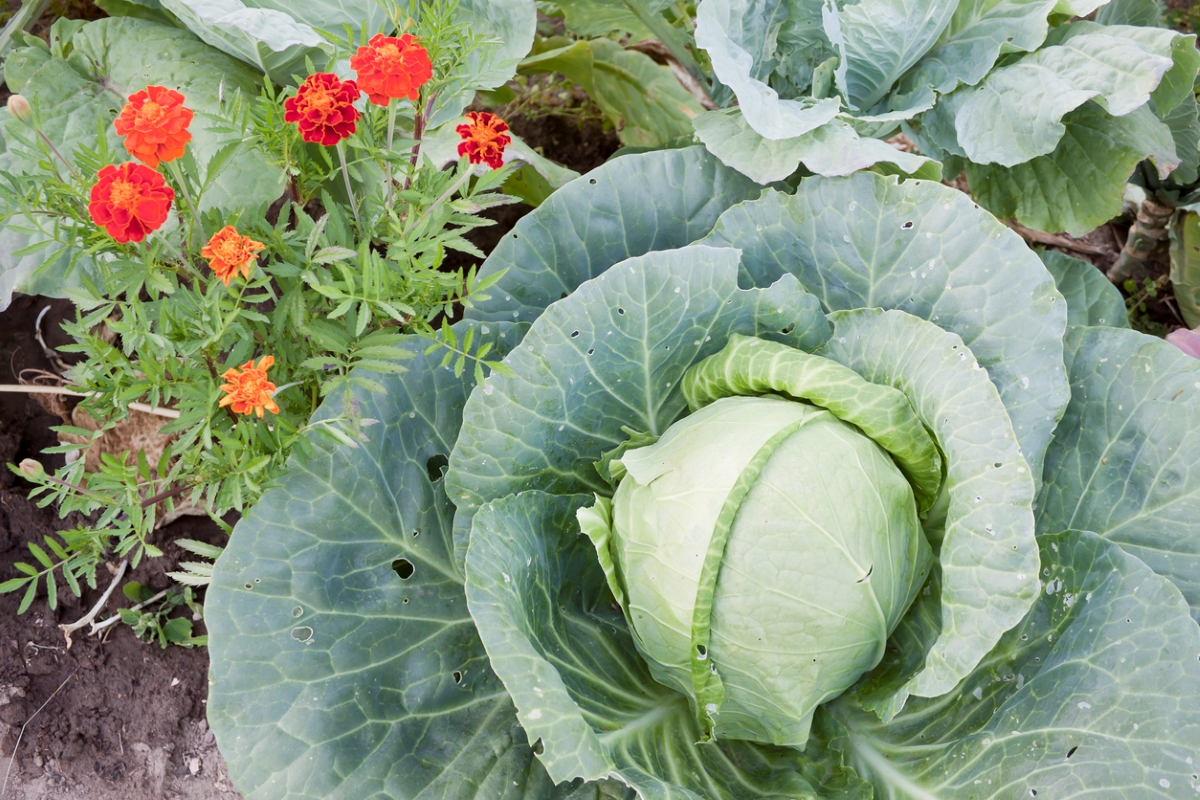
Cabbage worms have several natural predators, so encouraging these insects and animals to visit your garden can also help keep pests like cabbage worms out of your garden. Some predators for cabbage bugs include ladybugs, praying mantises, spiders, and ground beetles. Plant companion flowers that will attract these insects, such as dill or marigolds.
In addition to the beneficial insects and spiders listed above, birds eat cabbage worms. Add a bird bath and colorful flowers to attract songbirds to your garden to encourage them to feast on the worms. Or, you could even consider raising chickens or ducks, since these birds also eat cabbage worms.
Final Thoughts
Cabbage worms can cause a lot of damage to cruciferous vegetables like cabbage, broccoli, Brussels sprouts, and radishes in a garden. If an infestation of these pests occurs and remains untreated, they can even wipe out a crop, leaving just the stems and veins. Fortunately, there are several effective (and natural) methods that will help you get rid of cabbage worms and discourage them from returning to your garden.
RELATED: 8 Reasons Not to Use Pesticides in Your Yard and Garden

